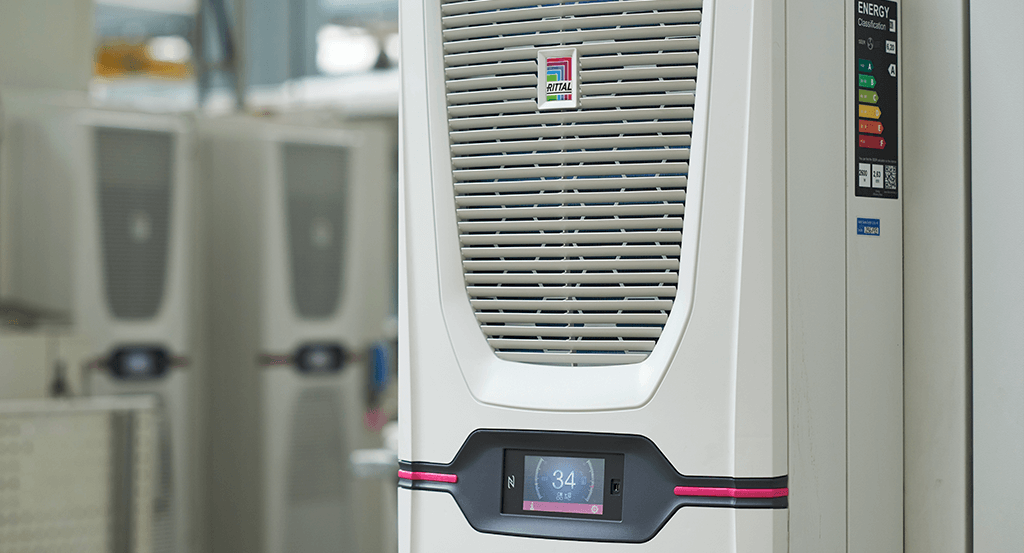Considerations
IP protection categories are the go-to ratings for most applications for protection against ingress of solid bodies, dust and water, as set out in IEC 60529. However, an enclosure is not simply a tightly sealed box. There are other important factors to bear in mind: dimensional accuracy/internal configurations, corrosion resistance, dynamic material strength, and protection in extreme climatic conditions, among others.
As we’ve described, it doesn’t necessarily follow that the ideal outdoor enclosure is the one at the top of the IP ratings; its design this has a major bearing on the nature of protection the enclosure can provide. In fact, choosing to only specify to IP66 rating could be detrimental in a number of ways: there are only a limited range of available enclosures; it raises issues around climate management; and it can cause issues with project deadlines and costs.
An IP66 rated enclosure provides protection against high pressure water jets, but that’s not what an outdoor enclosure typically needs to provide. Furthermore, the IP66 protection is removed every time the engineer opens the enclosure door for maintenance or commissioning, thereby exposing the components inside to dust and moisture/water. The only way to avoid this being an issue would be to house the equipment within a Relocatable Equipment Building (REB), rather than just in an enclosure.
As we’ve alluded above, the choice of enclosures that are IP66 rated is also very limited. You may need to go down the bespoke route, which is long-winded and expensive – and probably entirely unnecessary.
An IP55 rating means its internal equipment is protected against wind-driven dust and drops of water, which is typically more than enough for inland applications. To understand why requires a closer look at what might seem relatively inconsequential design details – but these details can be the difference between success and failure.
Features
An IP66 rated enclosure is not usually designed to deal with the consequences of prolonged or heavy rainfall, whereby rainwater falling on the enclosure collects next to the door seal. Not only is rainwater slightly acidic (because of the CO2 within the atmosphere), but it also contains other contaminants that, collectively, will degrade the seal over time. Plus, when rainwater freezes, it expands, pushing the door away from the enclosure body, leading to internal leaks.
By contrast, a specially designed outdoor enclosure has either a roof canopy or rainwater strip that stops the water from being trapped between the door and the body wall, thereby protecting the seal. This means the enclosure lasts longer and will provide better protection.
Materials
It’s very common to favour stainless steel enclosures over aluminium, or plastic GRP, for outdoor applications.
But once again, the choice should reflect the application.
Stainless steel will rust and corrode over time in some locations (e.g. coastal or marine environments) unless it is the correct grade of steel (ideally, 316L).
Aluminium is often a better and more cost-effective solution outdoors. It is lighter than steel and has a higher impact rating. Plus, any exposure to water or chemicals will create a layer of aluminium oxide that bonds to the surface and doesn’t flake (unlike rust).
Powder-coating the aluminium adds an additional layer of protection and will help extend the lifetime of the enclosure, ensuring it is safe for both personnel and equipment, even after many years in operation.
People Protection
This neatly segues into a final point, which is that enclosures do not just provide protection for the electrical equipment installed inside them. They also protect the people who use both switchgear and control gear systems – and those who work in close proximity - from the dangers of electric current.
These protection requirements and safety measures vary according to installation site, industry and application and are set out in standards, regulations and licensing conditions.
For applications where there may be a risk of electrical shock, a GRP plastic enclosure might be a better bet than a stainless-steel enclosure.
Be aware, though, that while GRP plastic is a lightweight, highly effective choice for some applications (such as petro-chemical or marine environments) as a material, it does have weaknesses. The plastic can breakdown under UV radiation so, before you buy, it’s worth checking with the manufacturer whether the enclosure has outdoor certifications for UV resistance.
GRP plastic enclosures may also not offer you the flexibility you need around the internal layout and configuration, to tidily house the equipment.
Climate Control
Climate control can also be more challenging with the highest IP-rated enclosures, especially outdoors where you cannot easily regulate the environment. The solar gain outdoors can be considerable in summer plus, of course, there is the heat emitted from the equipment itself. If there is a need to keep every spec of dirt and moisture out then how can cooling air get in, and this hot air be released? Conversely, of course, you may need to raise the temperatures in the enclosure in the winter.
If you are housing equipment that has significant heat loss (batteries, drives, transformers etc), we recommend using a thermal calculation to establish whether you need to consider additional climate control support.
